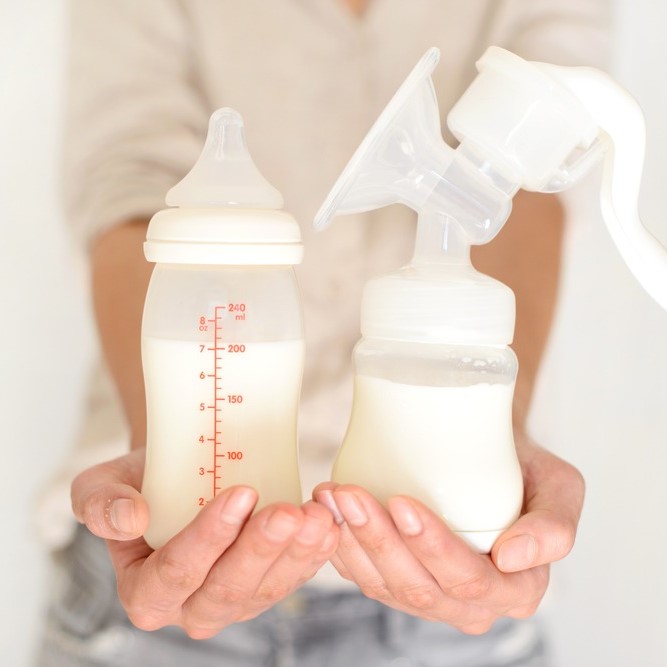Blue breast milk is a fascinating topic that has gained attention among parents and researchers alike. This unique variation of breast milk, characterized by its blue hue, is believed to possess several nutritional benefits that can enhance a newborn’s health. In this article, we’ll explore the remarkable properties of blue breast milk, shedding light on its potential advantages and the science behind this intriguing phenomenon.
The Science Behind Breast Milk’s Changing Colors
Breast milk color can change, and it’s normal. The initial milk, called colostrum, is often yellowish. As milk matures, it changes to a bluish-white hue. Many things can cause color shifts in breast milk. Diet is a common factor. For instance, foods with strong dyes may alter milk color.
Breast milk’s varied colors are usually harmless. Yellow or orange milk might come from eating carrots or pumpkin. Green milk can result from consuming lots of greens or blue-dyed foods. Sometimes, even black milk occurs, due to certain medicines.
Color changes aren’t always a sign of trouble. However, unusual colors like bright pink may need a doctor’s look. This color can be due to a bacteria called Serratia marcescens.
If you find any hints of blood, it’s wise to consult with a doctor. Although often not serious, professional advice ensures everything’s alright.
Remember, these color shifts typically don’t harm the baby. Nonetheless, if you’re concerned about your breast milk’s color, getting in touch with healthcare providers is the best step.
The Impact of Diet on Breast Milk Color

Breast milk color changes are normal and can reflect what a mother eats. Foods with strong colors, such as beetroot or carrots, directly influence milk hue. When mothers consume colored foods, their milk may show hints of pink, yellow, or green.
Most color changes pose no risk to babies. A mother’s diet with naturally pigmented foods can lead to yellow or orange milk. Green breast milk often comes from eating leafy greens or food with blue dyes. Even black milk can appear, usually from specific medications.
It is not just whole foods that can alter breast milk colors. Food dyes in snacks and drinks can also cause changes. While this is generally harmless, mothers should be mindful of their dietary choices.
In summary, blue breast milk and other color variations are frequently due to dietary habits. If the milk’s color seems peculiar, such as pink stained by a bacterium, consulting a doctor is advisable. For any concerns regarding color changes, especially if related to diet or medication, seeking medical advice provides reassurance.
Common Foods and Substances That Can Affect Breast Milk Hue
Breast milk hues can vary due to diet. Here are common foods and substances that may change its color:
- Beetroots: These can turn breast milk pink.
- Carrots and pumpkins: Strong orange colors can impart a yellow or orange tint.
- Green vegetables: Foods like spinach may influence the milk to appear green.
- Food dyes: Artificial colors in drinks and snacks might affect milk hue.
- Medications: Some, like Minocycline, can cause breast milk to look black.
These changes are often not a cause for alarm. However, bright colors or blood-like appearances should prompt a doctor visit. Understanding what impacts milk color can ease concerns. Remember, blue breast milk and other shades are mostly due to what a mother consumes.
Health Implications of Blue-Tinged Breast Milk
When you notice blue breast milk, it’s usually no cause for concern. This color often comes from the natural maturation process of the milk. As mentioned before, early breast milk, known as colostrum, appears yellowish. It turns bluish-white as it matures. But if your breast milk is a bright hue of blue, diet is often the reason. This includes foods with natural or artificial blue pigments.
Certain foods or drinks with strong dyes can change breast milk’s appearance. Blue-tinted drinks or snacks may bring out a bluer shade in your milk. This is typically harmless. It does not affect the milk’s quality or the health of your baby. In fact, babies rarely notice these changes. Mothers need not worry much about the different shades of their milk. But they can always consult with a healthcare provider for peace of mind.
It’s important to remember that breast milk’s color has a wide range of normal. Most changes do not suggest any health issue. A healthy diet contributes to healthy milk, regardless of its shade. Blue breast milk is no exception. It should not be an immediate concern unless there are other symptoms. If your baby shows signs of discomfort or if you spot other unusual changes, it’s best to reach out to a doctor. They can give you professional advice and reassurance.
Addressing Concerns of Blood in Breast Milk
Finding blood in breast milk can be alarming. Most times, it’s not a serious issue. Blood can appear due to a cracked nipple, common after birth. It could also be from benign growths in milk ducts. These growths are not cancer and often resolve quickly.
Blood in breast milk is sometimes called ‘rusty pipe syndrome.’ This happens in the days just after childbirth. It usually clears up within a week. If the baby spits up blood-tinged milk, it’s often from the breast milk, not the baby.
If you notice pink, red, brown, or black tinges in breast milk, consult your doctor. While such cases rarely mean something serious, a professional check-up is reassuring.
In conclusion, traces of blood in breast milk are not typically harmful. Do seek medical advice to be sure. Remember, proper diagnosis and peace of mind are important for both mother and baby.
Proper Storage Techniques for Expressed Breast Milk

Maintaining the quality of expressed breast milk is crucial for your baby’s health. Here are key storage techniques:
- Use Clean Containers: Always store breast milk in clean, food-grade bottles or bags specifically designed for breast milk.
- Label Clearly: Mark containers with the date of expression. This helps you use the oldest milk first.
- Keep Cool: Store milk in the back of the fridge, where it’s coldest, for up to four days.
- Freeze for Longer: For long-term storage, freeze breast milk. It can stay usable for months.
- Thaw Safely: Never microwave breast milk. Thaw it in the fridge or in warm water.
- Avoid Refreezing: Once thawed, do not refreeze breast milk. Use it within 24 hours.
Following these steps ensures your blue breast milk, and any other shade, stays safe and nutritious for your baby. If you have any concerns or notice unusual changes in the milk after storage, consulting with a healthcare expert is always a good plan of action.
Scalding Breast Milk: When and Why
Mothers may find their expressed breast milk has an off smell or taste. This is due to enzymes that break down milk fats. Enzymes cause oxidation, which changes the milk’s flavor. If your baby refuses milk because of this, scalding helps. Scalding involves heating the milk just below boiling. Then, you cool it rapidly in ice water. This stops the enzymes from causing flavor changes.
Scalding should only be done if your baby rejects the milk. Heat milk carefully on a stove, but never in a microwave. Once scalded, cool quickly and store as usual. Scalding does destroy some immune factors in breast milk. Therefore, use this method only when necessary.
In summary, if your baby dislikes the taste of stored breast milk, consider scalding. It’s an extra step, but it can make the milk more acceptable to your baby. Always handle breast milk with care, scald only as a last resort.
Professional Guidance and When to Contact Your Doctor

Seeking professional guidance is crucial when it comes to the health of both mother and baby. If you notice blue breast milk or any other color change and feel unsure, a doctor’s advice can offer peace of mind. Here are instances when you should reach out to healthcare professionals:
- Unusual Colors Persist: If after adjusting your diet, the unusual colors, such as bright pink or dark colors, don’t change, it’s time to call a doctor.
- Blood Presence: Any hint of blood, whether pink, red, brown, or black in breast milk, merits a doctor’s visit.
- Baby’s Reactions: If your baby shows signs of discomfort, rejects the milk, or has unusual stool or spit-up, consult with a pediatrician.
- Storage Concerns: If you’ve followed proper storage techniques but the milk smells or tastes off, get professional advice.
- Scalding Questions: If you need to scald breast milk often due to changes in taste, discuss it with a lactation consultant to ensure you’re not reducing the milk’s benefits.
Regular check-ups and talking about breastfeeding during pediatrician visits help keep breastfeeding safe and beneficial. Always prioritize your baby’s health and seek advice if anything unusual occurs.
